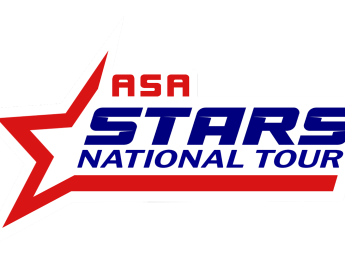Share this content:
The decision to locate the 2023 NASCAR All-Star Race at North Wilkesboro Speedway generated the following estimated impacts for the State of North Carolina:
• Increased the value of the statewide economy by $42.4 million
• Increased statewide labor income by $27.9 million
• Created 625 jobs for North Carolinians
• Led to over $20 million in direct construction and infrastructure investment in Wilkes County
• Generated nearly $29 million in visitor spending
INTRODUCTION
This report estimates the economic impacts of the 2023 NASCAR All-Star Race in Wilkes County, North Carolina, as specified in the Joint Conference Committee Report on the Current Operations Appropriations Act of 2023.
North Wilkesboro Speedway, located in North Wilkesboro, NC, holds a special place in NASCAR history as one of the sport’s earliest and most iconic venues. Built in 1947, the track quickly became a popular venue in the early days of the NASCAR circuit. Measuring 0.625 miles and featuring a distinctive uphill backstretch and downhill frontstretch, the track’s unique design made it a favorite among fans and drivers.
Despite its historical significance, financial challenges forced the track to close in 1996, though numerous efforts followed to revive the speedway. It briefly reopened in 2010, however financial difficulties persisted, and the track closed again in 2011. Intense fan interest led to increased discussion in recent years about renovating the racetrack and bringing NASCAR’s highest level of competition back to North Wilkesboro. In partnership with the State of North Carolina, owner Speedway Motorsports planned significant facility investments, supported by approximately $18 million in American Rescue Plan funds, including new safety barriers, lighting, paving, fencing, roofing, and HVAC and electrical equipment, as well as refurbished bathrooms and concession areas. These upgrades were critical to the decision that the 2023 NASCAR All-Star Race would be held at North Wilkesboro Speedway.
The All-Star Race was held on May 21, 2023 and attendance was approximately 39,000.
METHODOLOGY AND DEFINITIONS
For this analysis, Commerce used IMPLAN1 economic impact modeling software. The IMPLAN model is widely used by local, state, and federal government agencies, as well as private industry and universities. Estimates in this report were derived with inputs from several sources:
1. Construction and event-related expenses were provided by Speedway Motorsports, LLC, which owns North Wilkesboro Speedway.
2. Visitor spending data was collected via a survey of All-Star Race attendees, administered by the Department of Commerce on the day of the race.
3. Some additional travel-related data was accessed through Placer.ai, a mobile device location data analytics company.
Construction and event-related expenses collected from Speedway Motorsports represent only spending paid to North Carolina vendors in preparation for the race and none of this spending would have occurred if not for the decision to locate the All-Star Race in North Wilkesboro.
The visitor spending survey was administered in partnership with East Coast Research, a North Carolina-based research firm, with whom the Department of Commerce contracted to collect survey responses on the day of the All-Star Race. East Coast brought a team of eight survey administrators who collected responses from attendees at random.
KEY ECONOMIC IMPACT DEFINITIONS
Direct Impacts: The known or predicted change in the economy that is being studied. In this analysis the direct impacts
are the changes associated with the project site.
Indirect Impact: Secondary impact caused to industries in the supply chain of the direct impact. In this case, indirect impacts would result from industries supplying resources and materials.
Induced Impact: Direct and indirect employment (and increases in labor income) creates additional household spending on goods and services.
Employment: The number of full-time and part-time jobs; measured by place of employment. Employees, sole proprietors, and active partners are included, but unpaid family workers and volunteers are not.
Value Added: is a measure of the contribution of each private industry and of government to a region’s Gross Domestic Product. It is defined as an industry’s gross output (which consists of sales or receipts and other operating income, commodity taxes, and inventory change) minus its intermediate inputs (which consist of energy, raw materials, semi- finished goods, and services that are purchased from domestic industries or from foreign sources).
Gross Output: The amount of production, including all intermediate goods purchased as well as value added
(compensation and profit).
Job-Years: IMPLAN measures employment impacts in job-years with each unit of employment equivalent to one job for one year. This is important when IMPLAN is used to measure construction or other non-permanent operations. For example, IMPLAN does not distinguish between ten units of employment (workers) employed over five years, and fifty workers employed in one year. Therefore, one construction worker may account for multiple units of employment if that person is employed over multiple years.
While economic impact modeling can provide general information about how an economy will react to particular events, future economic performance will vary with economic conditions and future investments. Economic modeling should be used in conjunction with other forms of analysis to estimate overall project merits and drawbacks.
ECONOMIC IMPACTS
To measure the impacts of visitor spending resulting from the All-Star Race, the Department of Commerce administered a survey of race attendees on May 21 during pre-race festivities and while attendees entered the racetrack gates. Commerce received 398 survey responses, providing details on how race fans had spent their time and money during their All-Star Race experience.
According to our survey results, All-Star Race attendees spent $28.9 million on food, accommodation, travel, etc.
About 59% of fans attending the race were residents of North Carolina, including 12% of whom were from Wilkes County. But survey respondents attended from as far away as California, Washington State, Canada, and New Zealand.
Home Locations of All-Star Race Attendees
| Wilkes County 12.1% North Carolina (except Wilkes) 46.5% Other States 40.5% Outside the US 1.0% |
Data from Placer.ai, a mobile device location data analytics company, shows that nearly 42,000 unique visitors came to the racetrack over the week of the All-Star Race, and we can see that visitors on the day of the All-Star Race came from at least thirty-eight states, as illustrated below. Orange markers illustrate the home zip codes of race goers captured in the Placer.ai data.
2023 NASCAR All-Star Race Attendees Came from 38 States
Home Locations of Visitors to North Wilkesboro Speedway on May 21, 2023
Source: Placer.ai, 2024 Placer Labs, Inc., https://www.placer.ai/
Thinking more about the All-Star Race attendees from outside the state, 36% stayed in North Carolina at least two nights and 25% stayed at least four nights, according to Commerce’s survey. On average, respondents attended 2.3 other NASCAR events over All-Star Race weekend, in addition to the main All-Star Race.
In addition to visitor spending, data collected from Speedway Motorsports were used as inputs to this impact model. Specifically, this model accounts for about $20 million in racetrack-related construction and infrastructure investment in Wilkes County, as well as over $3.4 million in other event-related expenses.
ECONOMIC IMPACTS FROM THE ALL–STAR RACE
According to the results of the IMPLAN model, the 2023 NASCAR All-Star Race resulted in the creation of 625 jobs in North Carolina (including indirect and induced jobs).2 As the following table shows, the model also estimates that the event increased North Carolina’s labor income by $27.9 million, gross domestic product by $42.4 million, and gross economic output by $79.7 million.
Statewide Impacts from All-Star Race
| Impact Type | Employment | Labor Income | Value Added | Gross Output |
| Direct Effect | 432 | $17,100,000 | $23,500,000 | $43,300,000 |
| Indirect Effect | 100 | $5,900,000 | $9,700,000 | $20,300,000 |
| Induced Effect | 93 | $4,800,000 | $9,200,000 | $16,100,000 |
| Total Effect | 625 | $27,900,000 | $42,400,000 | $79,700,000 |
Source: IMPLAN; model created April 2024.
All monetary impacts presented in 2024 dollars and rounded to the nearest hundred thousand. Sums of effects may not add to Total Effect due to rounding.
NC Department of Commerce PR




